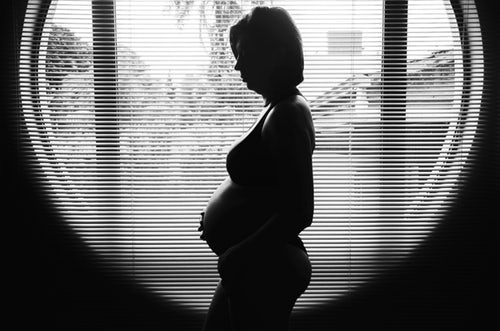Molar pregnancy
A molar pregnancy is an abnormal pregnancy that occurs during the fertilization. It resembles a cluster of grapes
Molar pregnancies are categorized as partial moles or complete moles
The word mole being used to denote simply a clump of growing tissue
Incidence
1/100 to 1/1000 pregnancies and higher rates in Asia than the Western countries
Genetic review

Complete moles have 46 chromosomes (diploidy) 85% are 46; XX and 15% are 46, XY, all of paternal origin. Most partial moles have 69 chromosomes (triploidy) 69, XXX; 69, XXY; or 69, XYY, including 23 of maternal origin and 46 of paternal origin
Signs and symptoms
- An early molar pregnancy may be clinically indistinguishable from a normal pregnancy.
- Molar pregnancies usually present with vaginal bleeding, abdominal pain, cramps of the lower abdomen
- The uterus is often large for gestational age.
- The ovaries may be enlarged with cysts that cause abdominal pain
- There may also be more vomiting than would be expected (hyperemesis).
- Sometimes there is an increase in blood pressure along with protein in the urine which may present as early preeclampsia
- Sometimes symptoms of hyperthyroidism are seen
Causes and Risk Factors
The cause of this condition is not completely understood.
Risk factors may include
- Defects in the egg
- Abnormalities within the uterus,
- Nutritional deficiencies. Diets low in protein, folic acid, and carotene
- Women under 20 or over 40 years of age have a higher risk
- Patients with previous history of molar pregnancy
Diagnosis
Ultrasound examination is used in the diagnosis before evacuation
Partial mole is usually presented as a fetus with large placenta
Complete mole presents with a picture of snowstorm or bunch of grapes
Definitive diagnosis is made by histological examination of the products of conception

Ultrasound findings
Complete mole
- Enlarged uterus
- May be seen as an intrauterine mass with cystic spaces without any associated fetal parts
"Snow storm" or "bunch of grapes," type appearance. - Bilateral theca lutein cysts may also be seen on ultrasound
Partial mole
- Usually presents as a fetus with large placenta
- Cystic spaces within the placenta which may not always be present
Coexisting molar with a normal fetus
Rarely in the twins’ pregnancy one can be complete mole and the other a normal fetus, usually does this pregnancy end up with preterm labor or preeclampsia.
Investigations
Urine analysis
Thyroid function test
BhCG usually highly elevated and is used in diagnosis and follow up
Baseline creatinine, electrolytes that may be abnormal after severe vomiting
Liver function test Full blood count and cross match
Chest x ray
Complications of molar
Persistent mole or malignant complications are more common with a complete mole than with a partial mole.
Degeneration into more invasive and malignant types of gestational trophoblastic disease can occur in about 10-20% of case
Thyroid storm
Bleeding during evacuation
Preeclampsia and eclampsia
Treatment and prognosis
Suction and curettage is the treatment of choice, ultrasound is better used during the operation to assure empty uterus
Rarely, management of molar is by hysterectomy and it is used in women over 40 years of age.
Patient is followed up with Serial beta-hCG levels until it goes back to normal.
It is recommended that the women avoids pregnancy for 6 months to 1 year after normalization of BhCG
Dr Najeeb Layyous F.R.C.O.G
Consultant Obstetrician, Gynecologist and Infertility Specialist







 Pregnancy Due Date Calculator
Pregnancy Due Date Calculator
 Chinese Gender Predictor
Chinese Gender Predictor
 Ovulation Calculator
Ovulation Calculator
 IVF Due Date Calculator
IVF Due Date Calculator
